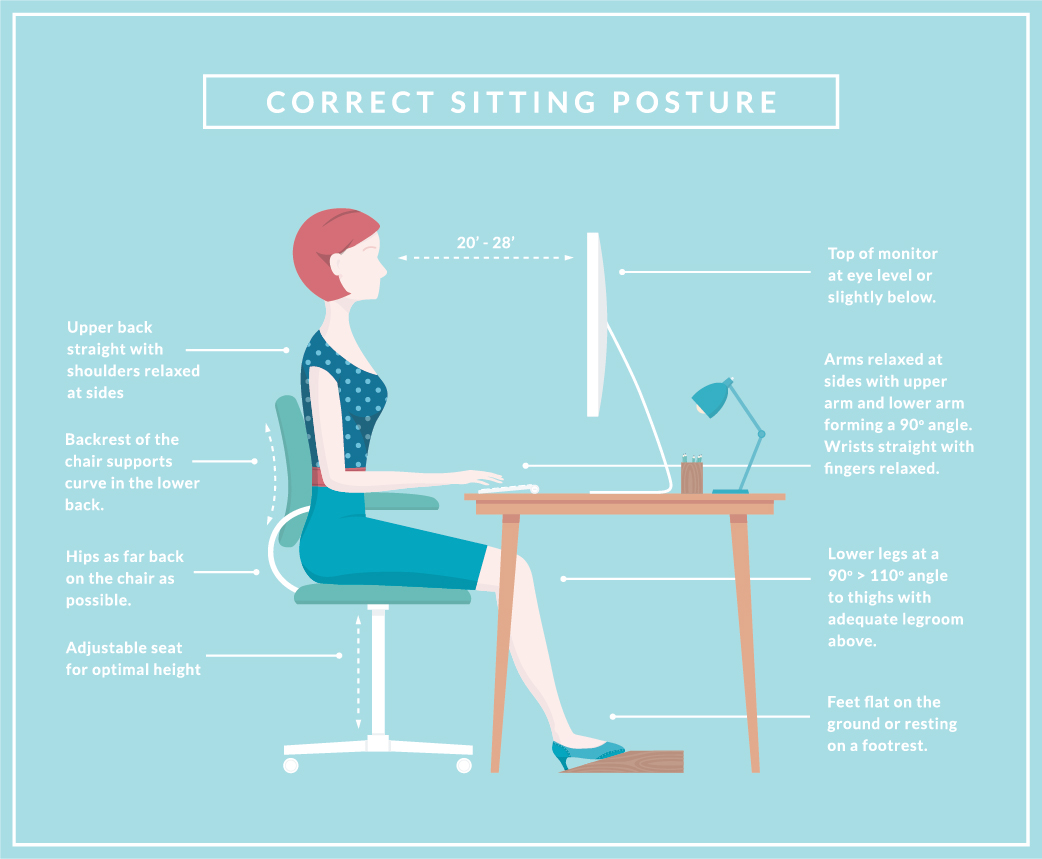March 26, 2020
As many Texans suddenly find themselves working from home during the coronavirus outbreak, it is likely that most people don’t have the same type of workstation in their homes as they do at the office. Texas Mutual is committed to helping you and your employees transition into work from home routines that keep your safety and wellness top of mind. Here are best practices and tips to help you make the most of your remote work situation.
Best practices
Adjusting to working from home can be challenging and it may take some time to find a new routine and schedule. The following tips are recommended best practices to help you work productively while also maintaining work-life balance at home.
- Choose a dedicated workspace: Designate a spot in your home for working. It should ideally be a space you don’t relax in.
- Define a beginning and finishing time: Pick a definitive start and end time each day to establish a clear work-life balance.
- Dress the part: Dress like you’re going to the office; it helps keep a sense of routine and keeps you focused.
- Have a plan: Keep a more structured daily schedule than usual to help you avoid distractions and maintain productivity.
- Think about how you’re communicating: Be conscious of how you’re communicating and the different communication methods you’re using.
- Take clear breaks: Remember to take breaks when you need to and use this time to get up, stretch and move around.
Safety tips
Accidents can happen anywhere at any time, which is why we’re sharing recommendations to help you maintain a safe environment while you’re working remotely.
- Consider lighting and space when setting up your workstation: Make sure you have enough lighting and space to work comfortably.
- Ensure walking paths and doorways are unobstructed: This will help prevent slips, trips or falls and keep paths clear in case of an emergency.
- Don’t place computers near heat sources: Computers and other hardware can overheat which could lead to malfunction and could even start a fire.
- Maintain a clean and clutter-free workspace: To minimize the spread of COVID-19, many counties and cities are implementing stay-at-home orders. While you are home and sharing space with your family members, be sure to sanitize your workstation and continue frequent handwashing. You should also keep your space free of trash and other hazards that could cause you to slip, trip or fall.
- Use power cord ties: Cord ties can help you keep your cords organized, preventing trip and fire hazards.
- Utilize surge protectors: Without a surge protector, a power surge can easily damage your computer, effecting your data or your system.
- Keep liquids away from electrical equipment: This includes on the ground and on your desk. You can also keep a coaster on your desk and a lid on your cup to help prevent any spills.
- Prevent cybersecurity risks: You can practice good computer security by utilizing a secured VPN and Wi-Fi, keeping up with company-approved computer updates and being vigilant of phishing scams.
- Stay hydrated and remember to give yourself a lunch break: Keep these things in mind as working remotely affects your normal office routine.
- Locate and utilize the following safety tools in your home:
- Smoke alarms and carbon monoxide detectors: It’s likely that you will already have these in your home so be sure to check their batteries and test them regularly.
- First-aid kit: Accidents can happen at any time so be sure you can quickly find first-aid essentials in your home.
- Fire extinguisher: Familiarize yourself with the fire extinguisher in your home so that if a fire occurs you are prepared to react quickly.
11) Prevent awkward postures and eye strain by making your workstation setup more ergonomic:
- Eliminate sources of glare behind the monitor and try not to face directly into a window.
- Follow the 20-20-20 rule by looking at an object at least 20 feet away for 20 seconds every 20 minutes.
- Keep your shoulders relaxed with your elbows at your side.
- Do not overreach for your keyboard or writing tools.
- When in seated position, your hips should be level-to-slightly-higher than your knees.
- If your feet don’t touch the floor, use a box or footrest to prop them up.
- Your elbows should be even or slightly lower than your keyboard.
- If possible, use an external monitor, keyboard and mouse.
- Take regular stretch breaks throughout the day.

The current coronavirus situation poses many questions for employers. At Texas Mutual, we’re committed to continuing to support you and your business needs. We’re working hard to provide you with a variety of resources that help you make informed decisions and that you can share with your employees. For more information, visit our regularly updated Coronavirus Resources & Recommendations page.
